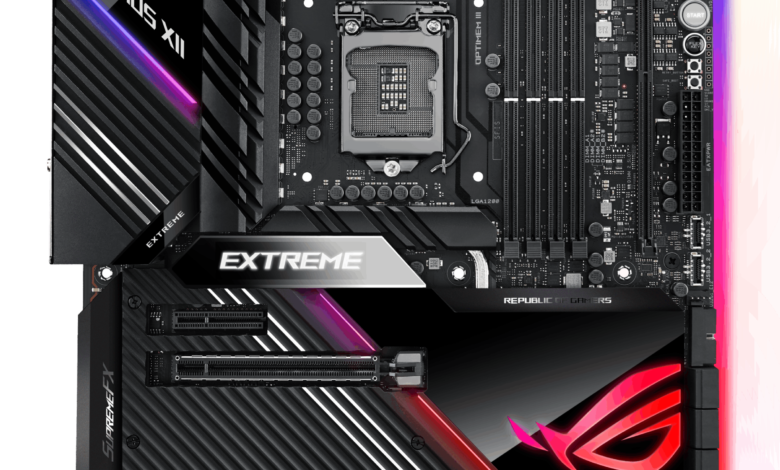
Introduction
In the ever-evolving landscape of computing technology, the motherboard stands as a crucial nexus, dictating the capabilities and performance of a computer system. Yet, within this realm, a distinct dichotomy exists between the intricately designed circuitry of laptop motherboard and the expansive layouts of desktop counterparts. As users navigate the myriad options available in the market, understanding the fundamental disparities between these two forms of motherboard architecture becomes paramount.
This exploration aims to dissect the nuanced dissimilarities, shedding light on the unique attributes that differentiate laptop motherboard from their desktop counterparts. From size constraints to power optimization, from expansion capabilities to customization options, delving into the intricacies of these foundational components unveils a tapestry of contrasts that shape the user experience and functionality of computing devices. Join us on a journey through the realms of compact efficiency and expansive potential as we unravel the distinct realms of laptop and desktop motherboards.
Laptop Motherboard vs. Desktop Motherboard: What’s the Difference?
Laptop motherboard and desktop motherboards serve the same fundamental purpose: to provide connectivity and support for various hardware components within a computer system.
Size and Form Factor:
- Laptop motherboards are constrained by the limited space available within the laptop’s chassis. This restriction necessitates a smaller form factor, often following standardized sizes such as the Mobile-ITX or similar layouts.
- Desktop motherboards, on the other hand, come in various form factors, each catering to different needs and preferences. Common form factors include ATX, micro-ATX, and mini-ITX. These larger sizes allow for more expansion slots, connectors, and features.
Components and Connectivity:
- Due to space limitations, laptop motherboard tend to integrate components more tightly and may have fewer expansion slots. Common integrated components include the CPU, GPU (sometimes integrated into the CPU), Wi-Fi modules, and sometimes even RAM chips.
- Desktop motherboards offer more expansion options with additional PCIe slots, DIMM slots for RAM, SATA connectors for storage devices, USB headers, and other connectors. This enables users to add dedicated graphics cards, sound cards, network cards, and various other expansion cards to enhance functionality.
Power Consumption and Cooling:
- Laptop motherboards are optimized for power efficiency to prolong battery life. This often involves using low-power components, aggressive power management features, and optimizing the motherboard layout for minimal power consumption.
- Desktop motherboards, being part of systems that are constantly plugged into a power source, have more flexibility in power delivery. They can support higher-power components without concern for battery life, leading to more robust cooling solutions and higher performance potential.
Customization and Upgradability:
- Upgradability in laptop motherboard is often limited due to the integration of components and space constraints. In many cases, the CPU, GPU, and RAM are soldered directly onto the motherboard, making upgrades difficult or impossible.
- Desktop motherboards offer greater flexibility for customization and upgradability. Users can typically upgrade or replace individual components such as the CPU, GPU, RAM, storage drives, and expansion cards to adapt to changing needs or technology advancements.
Integrated Components:
- Laptop motherboard frequently integrate components like the CPU and GPU to save space and reduce power consumption. Some laptops also integrate RAM directly onto the motherboard, particularly in ultraportable designs.
- Desktop motherboards rarely integrate these components, allowing users to choose and upgrade them separately. This modularity facilitates higher performance configurations and easier repairs or upgrades.
Portability vs. Performance:
- Laptops prioritize portability and energy efficiency, often sacrificing raw performance for longer battery life and smaller form factors. As such, laptop motherboard are designed to optimize power consumption and space utilization.
- Desktops prioritize performance and expandability, allowing for more powerful components and easier upgrades. Desktop motherboards can accommodate larger and more efficient cooling solutions, higher-wattage power supplies, and a wider range of expansion options.
In summary, while both laptop and desktop motherboards serve the same basic function, their designs and features are tailored to the specific requirements and constraints of their respective form factors and usage scenarios.
Conclusion:
In the labyrinth of technological innovation, the comparison between laptop motherboard and desktop motherboards emerges as a crucial exploration of form, function, and purpose. Through our journey, we’ve navigated the intricacies of size constraints, power optimization, expansion capabilities, and customization options that distinguish these two foundational components of computing devices.
Laptop motherboards, with their compact designs and integrated components, epitomize portability and energy efficiency. They are crafted to seamlessly fit within the confines of sleek chassis, prioritizing mobility without sacrificing functionality. However, their limitations in upgradability and customization underscore the trade-offs inherent in compact computing solutions.
In contrast, desktop motherboards embrace expansiveness and modularity, offering users a canvas for customization and scalability. With ample room for expansion cards, robust cooling solutions, and swappable components, desktop motherboards empower users to tailor their systems to exacting specifications, maximizing performance and adaptability.

